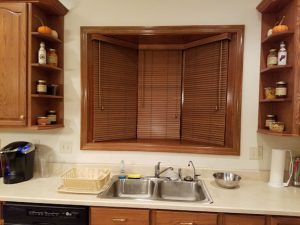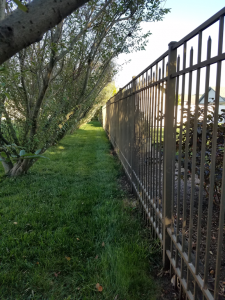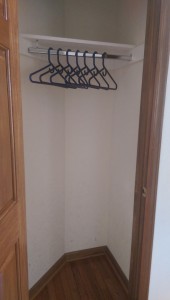People accumulate a lot of stuff in today’s society. We have a vast abundance of material goods, far more than at any time in the past; and often we don’t give much thought to what we’re going to do with them all. Our homes are overflowing with things that don’t have a place. Even if we are not classic hoarders or struggling with a garage that’s too full of junk to get the car inside, we still have to decide where to keep the things we buy.
Put another way, for every purchase we make in our modern consumer society, there is a corresponding drain on our mental energy as we ponder what we’re going to do with it. And after that gets sorted, we often need to rearrange other things in turn. We don’t always notice when we do this, and we may not trace the cause-and-effect chain all the way through.
By way of illustration: During the summer, my husband and I decided to buy a Keurig coffeemaker. We never drank enough coffee to make a standard coffeepot worthwhile, but we bought occasional cups at Starbucks or the gas station convenience store. So we thought a single-serving coffeemaker would be ideal—no bags of old coffee getting stale, and we could have a carousel with several different flavors.
After we made these purchases, we had to decide where to put them on the kitchen counter. The carousel fit into the corner well enough. The coffeemaker took more time to get situated because some decorative items already occupied the preferred location, which was the counter space underneath the cabinet that holds the dishes. We got the decorations rearranged, after a few tries, in a way that made enough space for the coffeemaker and still looked almost the same. We also bought travel cups, which we put in the corner cabinet above the new carousel.
At first we bought only small boxes of K-cups, the contents of which mostly fit into the carousel. Space didn’t seem to be a problem. But then, not surprisingly, we found that we were drinking more coffee because it was so much more convenient. After we had sampled various flavors and decided which ones we liked best, we thought it made more sense to order large boxes online and get the volume discount. When the boxes arrived, we had to make room for them in the pantry. That wasn’t too difficult; but, as it turned out, there was still more to be done.
We already had a set of cups that matched our dishes. I regularly used them for hot tea before we got the coffeemaker. I thought they would be fine for coffee, too; but after we started drinking coffee more often, my husband told me that he would prefer to use mugs, rather than cups. We had some promotional mugs with various logos, none of which matched. Because we hadn’t used them, we kept them in the high cabinet above the refrigerator. To make space on an easily reachable shelf of the cabinet above the coffeemaker, we first had to take out some plastic glasses, and then we had to rearrange the contents of another cabinet to make room for the displaced glasses.
At this point, my husband had two mismatched mugs in the preferred spot above the coffeemaker. One was a large red mug that had been a blood donor freebie, and the other was a smaller white mug with a college sports logo. That looked awkward because almost everything else in the cabinet was part of a matched group. While doing some Christmas shopping, I found a nice boxed set of two mugs that read “Joy to the World” and featured a cheerful winter scene. Problem solved, or so I thought.
But I never did move the old mismatched mugs to the cabinet above the refrigerator because it occurred to me that my husband might want one of them if he drank more than two cups of coffee in a day, or if we forgot to run the dishwasher. So at the present time, all four mugs are residing in the cabinet above the coffeemaker. They still look awkward and don’t fit well either.
I’m probably going to move the old mugs to the cabinet where we put the plastic glasses when we first made space for the mugs. But right now, the remaining space on that shelf is taken up by a box of K-cups in assorted holiday flavors. I have the options of moving the box to the pantry, which would be less convenient because the pantry is farther away from the carousel; moving the box to another cabinet and doing more rearranging; or finding another place for the old mugs, which would also require more rearranging. And so the saga continues…
I have been enjoying the coffeemaker, and I very much appreciate the wonders of modern technology making such small indulgences possible. This post isn’t meant as a complaint, but simply as an observation that our consumer culture takes up more of our mental energy than we may realize. We shouldn’t assume that if people are having trouble clearing away clutter or adjusting to small changes, there must be something wrong with them. Today’s world requires us to deal with more clutter and more small changes as part of our everyday lives. These are cultural issues, not just individual problems. We should consider how our social structures might be adapted to better suit our needs in this regard.




